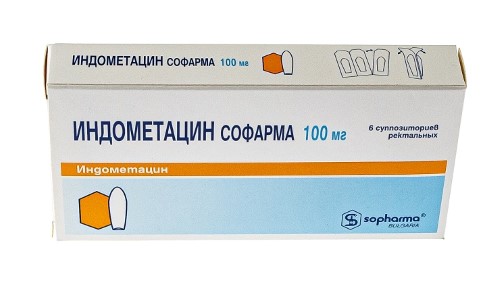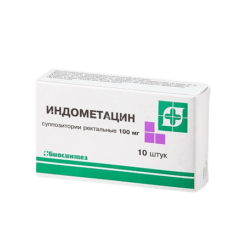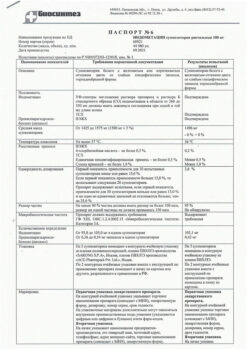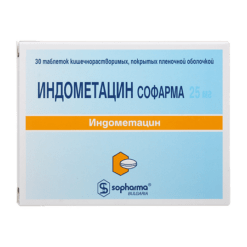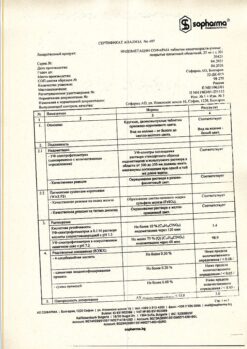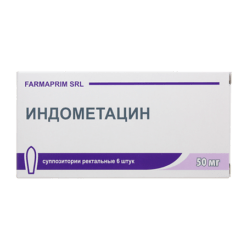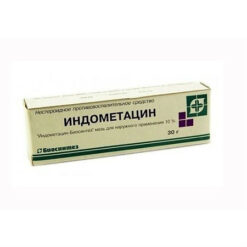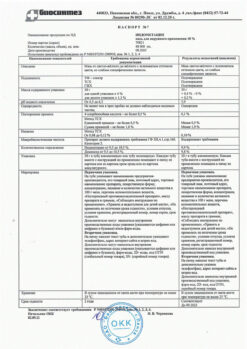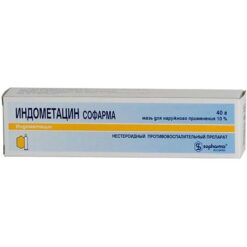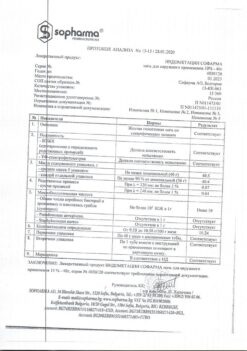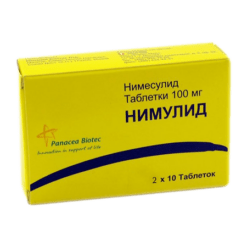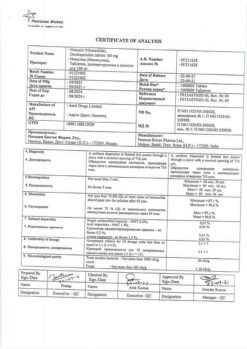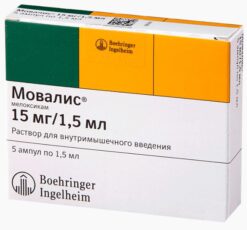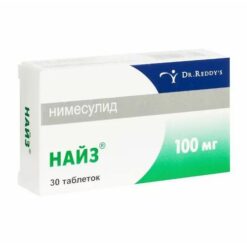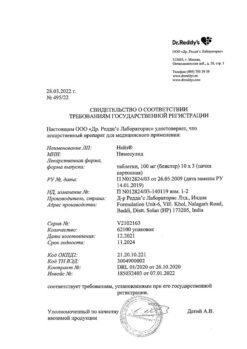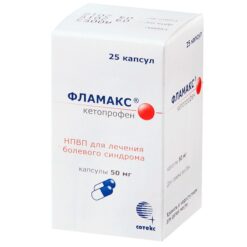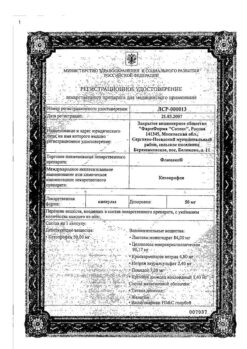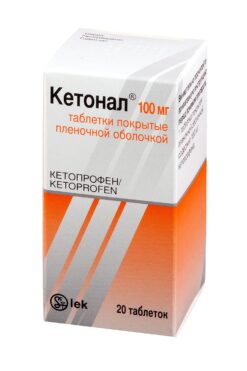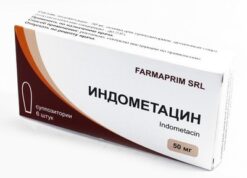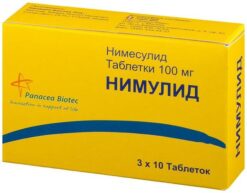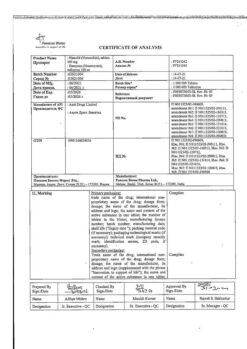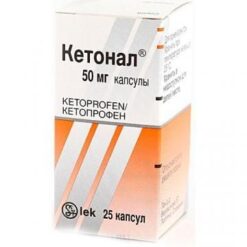No products in the cart.
Indomethacin, rectal, 100 mg 6 pcs
€5.93 €5.19
Description
Indomethacin has anti-inflammatory, analgesic and antipyretic, as well as some antiaggregant action.
Inhibits the activity of anti-inflammatory factors, reduces platelet aggregation. Inhibiting cyclooxygenase 1 and 2, disrupts arachidonic acid metabolism, reduces the amount of prostaglandins (Pg) both in the focus of inflammation and in healthy tissues, suppresses exudative and proliferative phases of inflammation.
When used topically it causes alleviation or disappearance of pain syndrome of rheumatic and non-rheumatic character (including In case of pain of the joints at rest and when moving, it reduces morning stiffness and swelling of the joints, increases the range of motion; in case of inflammatory processes after operations and injuries, it quickly relieves spontaneous pain as well as pain while moving, reduces inflammatory swelling of the wound area).
Indications
Indications
For systemic use: articular syndrome (rheumatoid arthritis, osteoarthritis, ankylosing spondylitis, gout), pain in the spine, neuralgia, myalgia, traumatic inflammation of soft tissues and joints, rheumatism, diffuse connective tissue diseases, dysmenorrhea.
As an adjuvant for infectious and inflammatory diseases of the ENT organs, adnexitis, prostatitis, cystitis.
For local use: prevention of the inflammatory process during surgery for cataracts and on the anterior segment of the eye, inhibition of miosis during surgery.
Pharmacological effect
Pharmacological effect
Indomethacin has anti-inflammatory, analgesic and antipyretic, as well as some antiplatelet effects.
Suppresses the activity of anti-inflammatory factors, reduces platelet aggregation. By inhibiting cyclooxygenase 1 and 2, it disrupts the metabolism of arachidonic acid, reduces the amount of prostaglandins (Pg) both in the site of inflammation and in healthy tissues, and suppresses the exudative and proliferative phases of inflammation.
When used externally, it causes a weakening or disappearance of pain of a rheumatic and non-rheumatic nature (including pain in the joints at rest and during movement, reduces morning stiffness and swelling of the joints, helps to increase the range of movements; in inflammatory processes that occur after operations and injuries, quickly relieves both spontaneous pain and pain during movement, reduces inflammatory swelling at the wound site).
Special instructions
Special instructions
Use with caution in elderly patients, as well as with a history of liver, kidney, gastrointestinal diseases, dyspeptic symptoms at the time of use, arterial hypertension, heart failure, immediately after major surgical interventions, parkinsonism, epilepsy.
If there is a history of allergic reactions to NSAIDs, they are used only in emergency cases.
During the treatment period, systematic monitoring of liver and kidney function and peripheral blood patterns is necessary.
Concomitant use with acetylsalicylic acid and other NSAIDs is not recommended.
Indomethacin should not be used simultaneously with diflunisal.
When using indomethacin simultaneously with lithium preparations, one should keep in mind the possibility of symptoms of lithium toxicity.
When applied topically, it should not be applied to the wounded surface of the skin, and also avoid contact with the eyes or mucous membranes.
Impact on the ability to drive vehicles and operate machinery
During the treatment period, you should refrain from potentially hazardous activities associated with the need for concentration and increased speed of psychomotor reactions.
Active ingredient
Active ingredient
Indomethacin
Composition
Composition
Active ingredient:
indomethacin 100 mg
Contraindications
Contraindications
Individual hypersensitivity to indomethacin, aspirin or other NSAIDs (history of bronchospasm, urticaria or rhinitis caused by taking acetylsalicylic acid or other NSAIDs);
peptic ulcer of the stomach and/or intestines in the acute phase;
pregnancy and breastfeeding;
children’s age (up to 14 years).
hematopoietic disorders;
severe dysfunction of the liver and/or kidneys;
severe forms of chronic heart failure, arterial hypertension, pancreatitis;
for rectal use: proctitis, recent bleeding from the rectum.
Side Effects
Side Effects
From the digestive system: nausea, anorexia, vomiting, pain and discomfort in the abdomen, constipation or diarrhea, erosive and ulcerative lesions, bleeding and perforation of the gastrointestinal tract; rarely – intestinal strictures, stomatitis, gastritis, flatulence, bleeding from the sigmoid colon or from a diverticulum, jaundice, hepatitis.
From the central nervous system and peripheral nervous system: dizziness, headache, depression, feeling of fatigue; rarely – anxiety, fainting, drowsiness, convulsions, peripheral neuropathy, muscle weakness, involuntary muscle movements, sleep disorders, mental disorders (depersonalization, psychotic episodes), paresthesia, dysarthria, parkinsonism.
From the cardiovascular system: edema, increased blood pressure, tachycardia, chest pain, arrhythmia, palpitation, arterial hypotension, congestive heart failure, hematuria.
Allergic reactions: rarely – itching, urticaria, angiitis, erythema nodosum, skin rash, exfoliative dermatitis, Stevens-Johnson syndrome, erythema multiforme, toxic epidermal necrolysis, hair loss, acute respiratory distress, sharp drop in blood pressure, anaphylactic reactions, angioedema, dyspnea, bronchial asthma, edema lungs.
From the hematopoietic system: rarely – leukopenia, petechiae or ecchymosis, purpura, aplastic and hemolytic anemia, thrombocytopenia, disseminated intravascular coagulation syndrome.
From the senses: rarely – impaired clarity of visual perception, diplopia, orbital and periorbital pain, tinnitus, hearing impairment, deafness.
From the urinary system: rarely – proteinuria, nephrotic syndrome, interstitial nephritis, renal dysfunction, renal failure.
Metabolism: rarely – hyperglycemia, glucosuria, hyperkalemia.
Other: rarely – vaginal bleeding, hot flashes, increased sweating, nosebleeds, enlarged and tense breasts, gynecomastia.
Local reactions: at the site of intramuscular injection in some cases – formation of infiltrate, abscess; When used rectally, irritation of the rectal mucosa, tenesmus, and exacerbation of chronic colitis are possible.
For external use: itching, redness, rash at the site of application.
Interaction
Interaction
With simultaneous use, indomethacin can reduce the effects of saluretics and beta-blockers; enhance the effects of indirect anticoagulants.
With the simultaneous use of indomethacin and diflunisal, there is a risk of severe bleeding from the gastrointestinal tract.
When used simultaneously with probenecid, an increase in the concentration of indomethacin in the blood plasma is possible.
Indomethacin may reduce the tubular secretion of methotrexate, which leads to increased toxicity.
When used simultaneously with NSAIDs, the toxicity of cyclosporine increases.
Indomethacin at a dose of 50 mg 3 times a day increases the concentration of lithium in the blood plasma and reduces the clearance of lithium from the body in patients with mental illness.
With simultaneous use of indomethacin with digoxin, it is possible to increase the concentration of digoxin in the blood plasma and increase the half-life of digoxin.
Overdose
Overdose
Symptoms: nausea, vomiting, severe headache, dizziness, memory impairment, disorientation. In severe cases, paresthesia, numbness of the limbs, convulsions.
Treatment: symptomatic therapy. Hemodialysis is ineffective.
Storage conditions
Storage conditions
In a dry place, protected from light, at a temperature below 25 °C.
Shelf life
Shelf life
5 years
Manufacturer
Manufacturer
Sopharma JSC, Bulgaria
Additional information
| Shelf life | 5 years |
|---|---|
| Conditions of storage | In a dry, light-protected place, at a temperature below 25 °C. |
| Manufacturer | Sofarma JSC, Bulgaria |
| Medication form | rectal suppositories |
| Brand | Sofarma JSC |
Other forms…
Related products
Buy Indomethacin, rectal, 100 mg 6 pcs with delivery to USA, UK, Europe and over 120 other countries.

